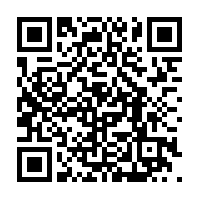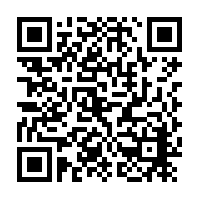Basic Paddling Strokes
Forward Paddling Strokes
The forward paddling stroke is the main paddle stroke used in kayaking. It is our primary means of forward propulsion and the start point of every adventure. While the basics of this stroke are fairly simple it is one of the most difficult to refine to a high level of perfection. If your racing, surfing, freestyling, kayak fishing, touring, creeking or just having a chilled out paddle on your local lake, whatever your adventure, you will need to use this paddle stroke.
There have been a lot of studies into the forward paddle stroke and there is a lot of information out there. Heres our basic breakdown of a good forward paddle stroke.
In its most simplest of terms, a forward paddle stroke starts at the front of the boat, runs parallel to the boat and finshes behind you. It is the main paddle stroke used for moving forwards.
How to do a forward paddle stroke
- Using good torso rotation, turn your shoulders and chest towards the front of the boat keeping the paddle square with your shoulder in the ‘paddlers box position’.
- Plant the blade in the water just past your feet near the front of the boat with the paddle vertical in the water. Your paddle should be vertical with your top hand around eye level.
- Whilst keeping a relatively relaxed grip on your paddle, initiate the forward stroke by unwinding from your torso. Use your torso rotation to pull the paddle blade along the side your the boat. The top hand should stay about eye level throughout this movement. By keeping the paddle nice and vertical you will be able to create forward prolusion energy rather than the rotational energy created by the low wide paddle stroke of the sweep.
- Allow the paddle stroke to run parallel alongside the boat.
- As you pull against the power of the water with your blade you will be able to use your core, lower body and feet to guide the boat in the direction you want it to go. Transferring the power from the blade, through your body and into the movement of the boat.
- Once the paddle passes your hips, you have completed the move. Recover the paddle by slicing the blade out through the water.
- Then get ready to put it back in the water on the opposite side and perform your next paddle stroke.
- Continue repeating this process and you will find you are accelerating forwards.
- If you start to turn you can use an extra paddle stroke on the same side to help you correct the boat or a forward sweep stroke to turn the boat back onto your desired course of direction.

Scan the qr code in the camera app to watch the video
Watch VideoReverse Paddling Strokes
Another great skill we need to master is backwards paddling to do this we use a backwards paddle stroke. The backward paddle stroke is very much like the forward stroke except in reverse. Many of today’s great paddlers spend many hours on river paddling backwards. Entering currents backwards, running rapids backwards (when safe) and much more… just to achieve that level of comfort when the inevitable turnaround happens.
In its most simplest of terms, a backwards paddle stroke starts at the back of the boat, runs parallel to the boat and finishes in front of you. It is the main paddle stroke used for moving backwards.
How to do a backwards paddle stroke.
- Using good torso rotation, turn your shoulder and chest towards the back of the boat keeping the paddle square with your shoulders in the ‘paddlers box position’
- Plant the blade in the water just behind your hips near the back of the boat with the paddle vertical in the water. Your paddle should be vertical with your top hand around eye level.
- Whilst keeping a relatively relaxed grip on your paddle, initiate the backwards stroke by unwinding from your torso. Use your torso rotation to push the paddle blade along the side of your the boat. The top hand should stay about eye level throughout this movement. By keeping the paddle nice and vertical you will be able to create backwards prolusion energy rather than the rotational energy created by the low wide paddle stroke of the sweep.
- Allow the paddle stroke to run parallel alongside the boat.
- As you push against the power of the water with your blade you will be able to use your core, lower body and feet to guide the boat in the direction you want it to go. Transferring the power from the blade, through your body and into the movement of the boat.
- Once the paddle passes your knees, you have completed the move. Recover the paddle by slicing the blade out through the water.
- Then get ready to put it back in the water on the opposite side and perform your next paddle stroke.
- Continue repeating this process and you will find you are accelerating backwards.
- If you start to turn you can use an extra paddle stroke on the same side to help you correct the boat or a reverse sweep stroke to turn the boat back onto your desired course of direction.
- In shorter boats it often helps to weight the bow slightly by using a forward paddling posture. This takes the weight of the stern of the boat and allow it to track and move through the water easier.
Tops Tips
- Use the back of the paddle blade to perform this paddle stroke. You do not need to spin or rotate your paddle. The back of the paddle blade is designed for reverse paddling.
- Try find a point in front of you that is directly opposite the point you would like to travel towards. That way if you keep your eyes and the bow of your boat pointing in that direction you should be travelling in a straight line. Every 4/5 paddle strokes look over your shoulder to check your still on route and that your not going to crash into anything. Again don’t worry if the bow flutters side to side, that normal. Just if you start to see your bow start to veer of course use your backwards paddle and reverse sweep strokes to bring it back in line.
- As with forwards paddling try and paddle within the speed limits of your boat. A kayak often responds a second or so behind each paddle stroke and is much harder to control when its moving fast. Keep to a speed you can control and use a smooth controlled paddle stroke rhythm allowing the boat time to respond to each paddle stroke. You don’t need to paddle super fast like a ‘Durracell Bunny’ to move fast. Instead use controlled paddle strokes with good technique.
- Try to use the unwinding effect of you torso rotation rather than just pushing on your arms to apply the power to the stroke. This allows you to access the energy from the larger muscle groups of the body.
- Its a great idea to incorporate backwards paddling into your warm up as it utilises a lot of muscles not used by other paddle strokes and will help keep you a stronger and more balanced athlete. Try doing 50 paddle backwards paddle strokes as part of your warm up.
- Remember one of the tricks when paddling backwards in a smaller boat is to weight the bow slightly by using a forward paddling posture. This takes the weight of the stern of the boat and allow it to track better.

Scan the qr code in the camera app to watch the video
Watch VideoForward Sweep
The forward sweep is the paddle stroke used to initiate a spin or turn and is often used to help steer the boat when paddling down a rapid or surfing a wave.
It is a wide low paddle stroke that can be used to turn the boat whilst stationary or on the move.
How to do a Forward Sweep.
- Plant the blade in the water just past your feet near the front of the boat with a the paddle horizontal to the water and low. Optimal reach is achieved by using torso rotating. Wind up your torso, allowing your shoulders and upper body to rotate which will help you extend your front arm out. Remember as with all moves you still want to stay within the safe ‘paddlers box’.
- Whilst keeping a relatively relaxed grip on your paddle, initiate the sweep stroke by unwinding from your torso rotation .As you unwind your torso you should find it will turn your shoulders and guide the paddle where you want it to go. Imagine the center of the paddle is attached to the center of the chest.
- Allow the paddle stroke to follow a wide arcing path to the side of the boat.
- As you pull against the power of the water with your blade you will be able to use your core and lower body to guide the boat in the direction you want it to go.
- Once the paddle pass your hips, you have completed the move. Recover the paddle by slicing the blade out through the water.
- Then get ready to put it back in the water and perform your next paddle stroke.
Top Tips
- The key to a sweep stroke is to have the paddle horizontal and low. Having the paddle horizontal rather than vertical means that the paddle blade travels away from the boat during the main stage of the move generating spin momentum rather than forward acceleration power. The further the blade from your boat the more spin, the closer to the boat the less spin.
- During the sweep stroke we use the power generated from the blade connecting with the water and pulling against the water to give us the energy to turn the boat. As you pull on the blade use your lower body to guide the boat in the direction you want it to go.

Scan the qr code in the camera app to watch the video
Watch video